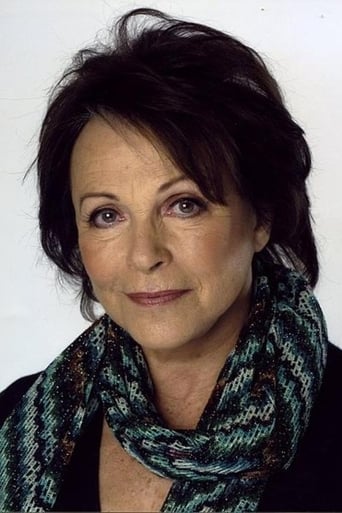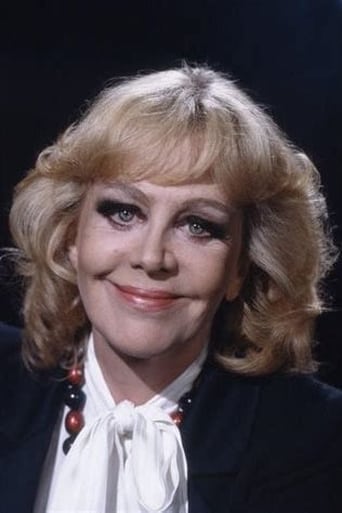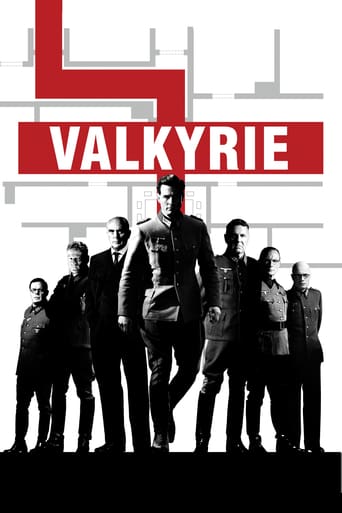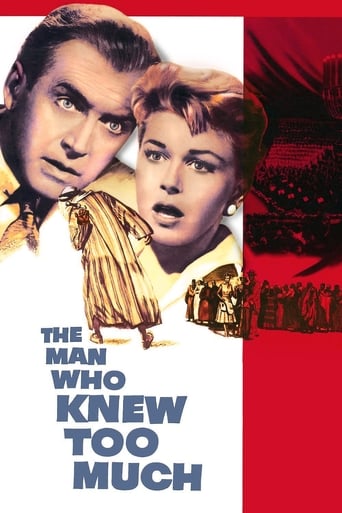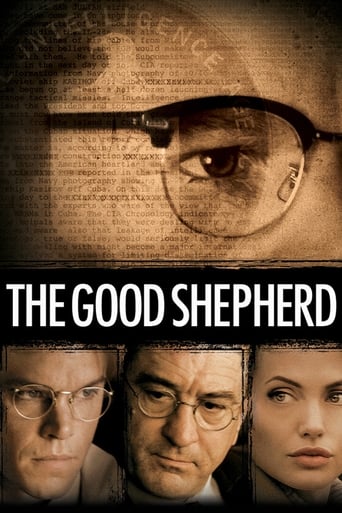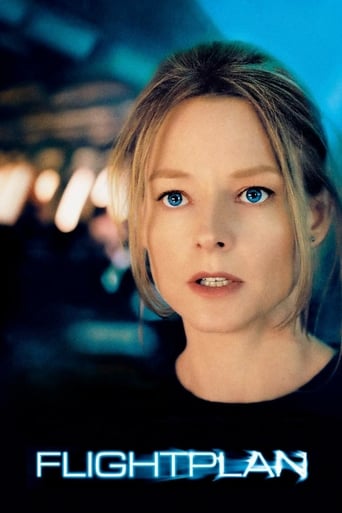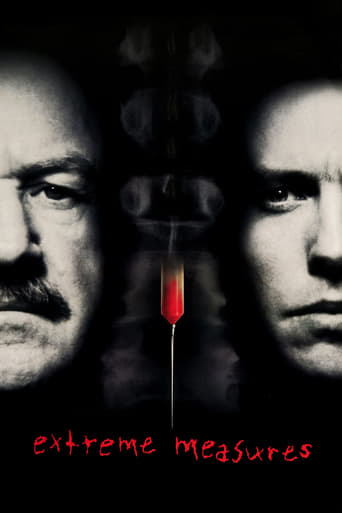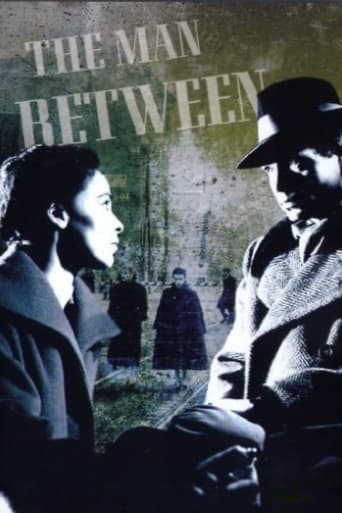
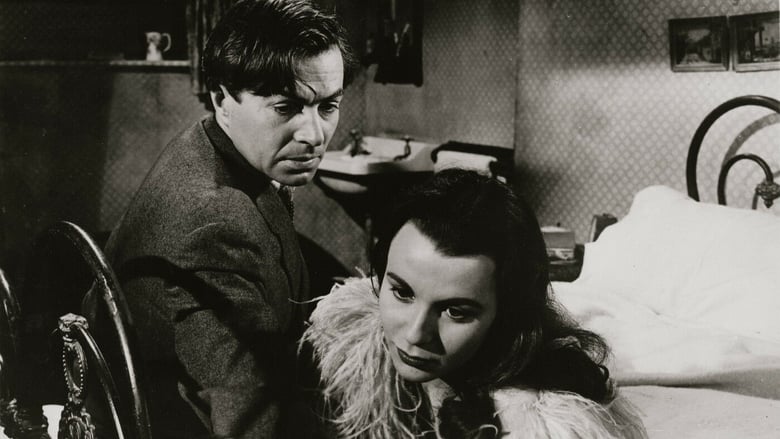
The Man Between (1953)
A British woman on a visit to post-war Berlin is caught up in an espionage ring smuggling secrets into and out of the Eastern Bloc.
Watch Trailer
Cast


Similar titles
Reviews
Tepid Cold War melodrama with Carol Reed making a half-hearted attempt to replicate The Third Man. The biggest problem is that none of the principals appear to be committed to the project so that the overall impression is that all the main personnel - writer, director, actors - owed the Production company a picture and were just discharging their obligation. Every time something of interest pops up - Mason and Neff arguing as Bloom walks in on them - it is immediately diffused so that little or no mystery/tension is left and we are looking at a damp squib. Usually the name of Harry Kurnitz on the credits is a guarantee of a decent script but not, alas, on this occasion. Disappointing all round.
"The Man Between" has been unfavorably compared with Carol Reed's earlier masterpieces like "Odd Man Out" and "The Third Man" which is an injustice, because this is an entirely different story and much more romantic at that. Of course, in this gloomy film of Stalinist oppression and commie commissar thugs in Berlin under the snow in the dreariness of a harrowed world capital of which nothing remains but a mutilated ghost cleft in twain, you miss certain more picturesque atmospheres of Ireland and Vienna, and there is no comedy here, although James Mason has a few dry and bitter laughs. His personification of what once was a man before the war turned into an abyss of cynical resignation is up to his best standards as an actor, and he is excellently partnered by the lovely Claire Bloom, who later returned to a similar play-acting in Berlin in Martin Ritt's hauntingly sinister "The Spy Who Came in from the Cold" twelve years later, which borrowed much of the moods in this film. What's especially haunting here is John Addison's spooky music dominated by a single saxophone constantly repeating the same wailing fragment of a tune, which adds a certain metaphysical interest to this film lacking in Carol Reed's earlier ones. The flight among the ruins and the skeleton of the macabre building construction adds to the nightmarish mood of alienation in an hostilely inhuman world going futuristic in an 1984 manner - the constantly repeated threatening giant posters of Stalin everywhere in East Berlin stresses this point and adds to the helplessness of disoriented man. I saw this film now for the third time since 1971, and each time I have found it more interesting. There are some flaws in the script, not everything is clear, and especially in the beginning the audience is thrown into total confusion until Hildegard Knef at last answers some questions. Her part is perhaps the most vital to the story, she has been married to a wonderful man lost in the war, who suddenly reappears as a ghost from the ruins after the world when she has found a new happy marriage, which unwelcome revisit from the past turns her life upside down. Of course, Claire Bloom is also confused by her upset condition. The intrigue is humanly very complicated but the more interesting for its infected labyrinths, which is one of the reasons why it will always be worth while seeing this film once again.
The bleak war-torn settings of East and West Germany during the post-war years of WWII provide a suitable backdrop for a rather cold tale involving complex characters and moral ambiguities.The story's first half takes time to set up the murky relationships between CLAIRE BLOOM, HILDEGARD KNEF and JAMES MASON before settling down to some quieter moments and romantic overtones when the chemistry between the young girl (Bloom) and the dangerous criminal (Mason) becomes evident. It's their relationship in the second half of the story that heats up some of the cold war atmosphere of the tale.Suspense mounts as they hide out from the German authorities, but all the while one gets the feeling that all will not end well for the ill-fated pair who have fallen deeply in love.If you liked the somber atmosphere of films like ODD MAN OUT and THE THIRD MAN, you'll definitely enjoy the atmospheric effects achieved in the crisp B&W photography on display here. Outstanding photography in scene after scene, although the story itself never quite achieves the same degree of finesse as the previously mentioned Carol Reed films.Nevertheless, it's all extremely well acted. Mason has never been more effective as a complex man full of moral ambiguities and Bloom is given a wonderful chance to display her charm and sensitivity in a well-written role.Definitely worth watching.
This taut film noir when compared to Carol Reed's masterpieces of that genre, Odd Man Out and The Third Man, is a flawed gem, but still that - a gem.Filmed in Berlin just eight years after WWII ended, and eight years before the Wall went up, it stars James Mason and Claire Bloom as star-crossed lovers in a city still digging itself out of the rubble made by Allied bombs, and still taking refugees from the east of Europe. The story tells of Susanne Mallison, a young Englishwoman who has arrived in Berlin to visit her older brother Martin, an army physician in the British sector of the city, and his German wife Bettina. It is while Susanne and Bettina are spending a day in the eastern sector, that Bettina finds herself reluctantly introducing Susanne to an old friend, the suave and handsome Ivo Kern. Susanne doesn't like Ivo at first -the audience isn't supposed to either - and she immediately becomes suspicious that he and Bettina are having a clandestine affair. She is curious though about the man, but will she learn the truth about Ivo and his mysterious background? Meanwhile off the set of the film there was more going on behind the scenes between the two stars. From the book 'James Mason - A Personal Biography', by Mason's former sister-in-law and life long friend, Diana de Rosso: "I was to observe another side of his character, rarely disclosed, when he came to London to finish filming The Man Between. He was a frequent visitor to our London home and he began to bring with him increasingly, his ethereally lovely co-star Claire Bloom...He showed a marked interest in the young actress. There was a quality about her, a stillness and tranquillity which set her apart from most artists her age, yet she had a pointed wit and a fine intelligence, virtues which appealed to James - and it was quite apparent that he was in danger of losing his heart. In truth I believe his heart was lost...His attachment to Claire was purely romantic. They used to sit on the floor together in our house, hand in hand, plainly adoring each other..."But as with Ivo and Susanne, it was the same with James and Claire. Mason did not divorce his estranged wife Pamela Kellino, and de Rosso was surprised that he didn't, but she has some theories. When he finally did get his divorce a few years later, Claire had moved on to other things in her career and private life. Still, when they met again several years later, it was clear that Mason still was very fond of her and she likewise.When I first saw this film I questioned whether Mason's German accent was very good, but when I lent it to a pair of friends who are German, they said that he did a good job. As for the German supporting cast, it is the best, especially the lovely Hildegard Neff, and the hauntingly beautiful musical score catches the bleak feeling of the city during a cold winter. They are also reasons I list this as one of my favourite film noir productions.


